This post was originally published in November 2020 and has been updated in December 2022 for accuracy.

As many of us that ship dangerous goods know, there are always exceptions to the regulations. For those that don’t know what an exception is, it’s a way of bending the rules that is allowed within the rules. One of the more common exceptions that is used is shipping dangerous goods in Limited Quantities. Shipping in Limited Quantities offers us a chance to only have to follow certain parts of the regulations and essentially be exempt from others. However, there are some significant differences between shipping Limited Quantities by Ground and by Air.
Limited Quantity by Ground
When shipping limited quantities by ground within the U.S., you must first determine if you meet the requirements. When you use the Hazardous materials table in the 49CFR, and locate your hazardous material, you will see in column 8A a section listed that you must go to for specific information. Here you will find the inner packaging limitations. The Gross mass of your package cannot exceed 30 kg. Per the 49CFR, if you are shipping in Limited Quantities, you are exempt from the following:
- UN Specification Packaging is not required, but you must use a combination packaging and some general packing requirements apply, for example, it must be a strong packaging capable of withstanding movement during transport.
- Marks / Labels / Placards: No hazard class labels, general markings, or addresses on packings are required, however, you must display limited quantity marking below:
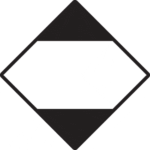
Also, no placards are necessary when shipping by ground.
- Shipping papers are not required unless it is a Reportable Quantity, a Marine Pollutant, or a Hazardous Waste. If shipping papers are used, they must include “limited quantity” or “ltd qty” on the paperwork.
In addition, if you are shipping Limited Quantities by ground in Canada per TDG, Inner Packaging limits appear in column 6A in Schedule 1 and the outer packaging cannot exceed 30KG gross. Section 1.17 explains what is exempt when shipping limited quantiles including:
1.17 Part 3 (Documentation), Part 4 (Dangerous Goods Safety Marks), Part 5 (Means of Containment), Part 6 (Training), Part 7 (Emergency Response Assistance Plan) and Part 8 (Reporting Requirements) do not apply to the handling, offering for transport or transporting of limited quantities of dangerous goods on a road vehicle, a railway vehicle or a vessel on a domestic voyage if each means of containment is legibly and durably marked on one side, other than a side on which it is intended to rest or to be stacked during transport, with the mark illustrated in subsection (5).
Packaging would look like below with the required marking for both the United States and Canada by ground.
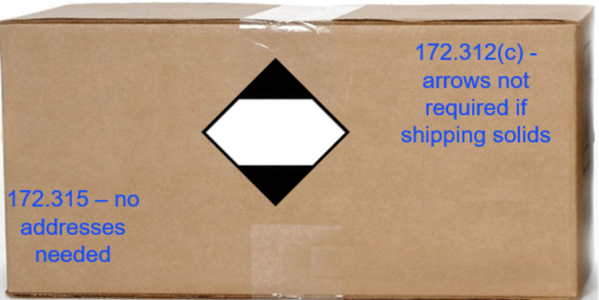
Limited Quantity by Air: IATA
You will find that shipping Limited Quantities by air is more restrictive than by ground. The net amount per package allowed when shipping Limited Quantities by air can be found by looking at column H of the list of dangerous goods located in section 4.2. There will also be a packing instruction beginning with the letter Y in column G that will give you more specific instructions. Similar to ground, you cannot exceed the Gross mass of 30 kg (66 lb) per package.
Here are the details below when shipping Limited Quantities by air:
- Packaging: Shipping Limited Quantities by air exempts you from UN Specification packaging, however, it must be a combination packaging capable of passing the drop and stack test per 2.7.6, and other inner pressure and closure requirements still apply.
- Shipper’s Declaration: There is a difference here between ground and air as a shipper’s declaration is still required. Limited Quantity shipments must have a “Y” in the Packing Instruction column of the declaration.
- Marks and Labels: All marks and labels are still required. This of course would include hazard class labels, addresses, net weights, etc. This is the big difference between shipping Limited Quantities by Air vs Ground. The Limited Quantity marking is required with the “Y” in the center.
An example of a package containing Acetone being shipped as a Limited Quantity by air is below:
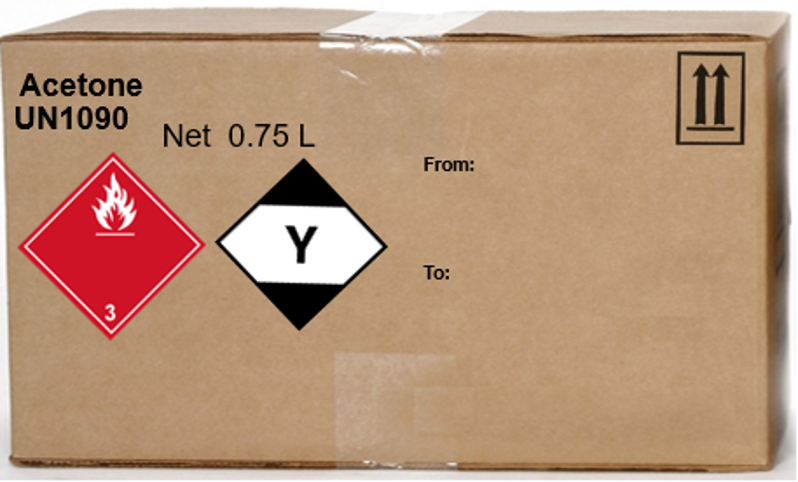
If you are shipping Limited Quantities and have any questions, please contact us.
We have all the products, services and training you need to ensure your staff is properly trained and informed.
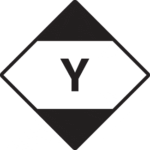 Limited Quantity ‘Y’ Label |
 Limited Quantity Label |
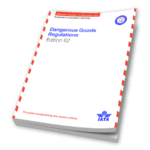 IATA Publications |
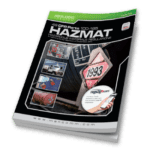 US 49 CFR Publications |





